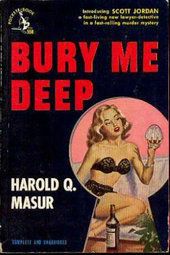The Cellist of Sarajevo by Steven Galloway
By Mirah W. (mwelday)
My book club’s most recent selection, The Cellist of Sarajevo by Steven Galloway, was an emotional, inspiring, frightening and personal read for me.
The Cellist of Sarajevo covers days of the Bosnian War from the perspective of four characters: the cellist (unnamed), Arrow, Kenan and Dragan. The character of the cellist was based on a real cellist who played at the site of a mortar attack that killed 22 people waiting in line to buy bread. The cellist goes into the street (amidst gunfire, mortar attacks, curious bystanders and mourners) every day for 22 days following the attack to play his cello in memory of his fallen neighbors.
How does war create different responses in different people? How does one person decide to pick up a weapon, another decide to pick up water bottles for a neighbor and someone else to pick up his cello? This novel examines all of these questions. For the people of Sarajevo, the cellist’s playing comes to mean different things as they come to accept their war-torn city and how they want to live during a terrible time.
On its own I think this novel would have given me pause to think about how circumstances can affect people, but it was more than that. Reading this novel was like putting a microscope to a situation and gaining a deeper understanding. Here’s why it was such a special read for me: a few years ago I became a sponsor sister with Women for Women International, an organization which strives to help women survivors of war, and my first sister was from Bosnia & Herzegovina, the country depicted in The Cellist of Sarajevo. Aldina was my sponsorship sister for one year and during that year we exchanged letters and pictures. I told her about my life and she told me of hers. We grew very close and we’ve remained in contact since. I can tell in her messages how important being a part of Women for Women was for her and how much she cherishes my friendship and support.
The war ended in 1995 but Bosnia & Herzegovina is still struggling. During the war, 60% of all homes were bombed and 60% of the livestock were killed. Even today leftover landmines make farming dangerous and very difficult. Today almost 33% of women are unemployed and, in an area trying to rebuild from catastrophe, this statistic makes women vulnerable to becoming victims of trafficking and prostitution. I knew statistics like this before I even heard of this book but reading it made all of these statistics feel even more real to me.
The Bosnia in the novel is the Bosnia my sister Aldina had to live through. The thought of it makes my heart ache. I joined Women for Women so I could make some difference to someone. I think the cellist might have played in the street for a similar reason: just to know he was making a difference during a time that seemed so bleak. Through Aldina’s letters I know I was able to help her more than I could have imagined; and, in turn, she opened my eyes to a world outside of my own. Aldina gained hope things in her life could improve and learned there were caring people in the world and I learned even the smallest gestures can seem immense to someone else if they are done with a caring heart. There is no way to know how the real cellist this novel is based on affected the people of Sarajevo. Perhaps he gave them a renewed sense of humanity or hope. Regardless of where we live and what language we speak, hope is something we all understand. For me, The Cellist of Sarajevo is about having hope we can overcome tragedy.




